Gardening FAQ #4 – What You Need To Know
Pests could be larvae of a leaf-eating beetle
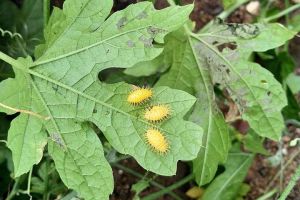
I recently came across these yellow bugs on my bittergourd plant. They ate the leaves and left behind the skeletal veins and, in a few days, killed the plant. What are these bugs and what is the best chemical-free way to exterminate them? I removed the damaged leaves and bugs, but there were too many for me to save the plant.
The pests could be the larvae of a leaf-eating ladybird called 28-spot ladybird beetle. Both the young and adult consume leaves of your bittergourd and many other edible plants.
If there are a few of them, you can remove them by hand to reduce the use of chemicals in the garden.
If the infestation is too severe, you may want to try chemical pesticides such as cypermethrin, which is a type of synthetic pyrethroid.
Do note that chemical pesticides can affect the beneficial fauna in your garden. Hence, do not use this too often on your plant.
For suggestions on how to control another plant worst enemy, head over to our section on Weed & Moss Control.
Trumpet Bush stem cuttings need time to root
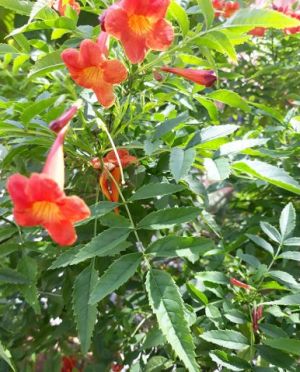 What is the name of this shrub? It seems to be a free flowering plant. What is the best and/or easiest way to propagate it? I have tried rooting cuttings, but without any success.
What is the name of this shrub? It seems to be a free flowering plant. What is the best and/or easiest way to propagate it? I have tried rooting cuttings, but without any success.
The plant is known commonly as Esperanza and Trumpet Bush. Its botanical name is Tecoma fulva ssp. guarume.
You can use semi-hardwood stem cuttings, taken from the slightly green but woody portions from the plant, for propagation.
The media should be one that is washed coarse sand-based to permit moisture retention and drainage. Use rooting powder to help the plant root.
Do note that semi-hardwood cuttings will take some time to root, so be patient.
You can also read our post on Best Grow Bags: Honest Reviews + Buyer’s Guide for ways to improve this situation.
Leaves of Japanese menthol mint have strong and sharp flavour
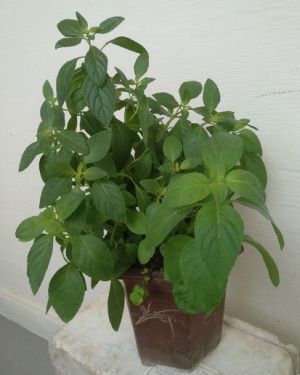 I was told this plant is a mint. What is its name and are the leaves edible?
I was told this plant is a mint. What is its name and are the leaves edible?
The plant is a cultivar of Mentha arvensis. It is sometimes called the Japanese menthol mint and, locally, some people name it “icy mint”. The common names are due to the leaves’ strong and sharp minty flavour, without the sweetness that the common spearmint has.
As such, this mint has rather limited culinary uses. Some people use the leaves to make a medicinal tea to clear the airways.
If you would like to bring this indoor and nucture them under grow lights for a better control on the sun exposure, you can also consider putting them under grow light fixtures. For more details, check out our post on Best Growing Light Fixtures And Buyer’s Guide.
Growing media may be the root of the issue for mother-in-law’s tongue
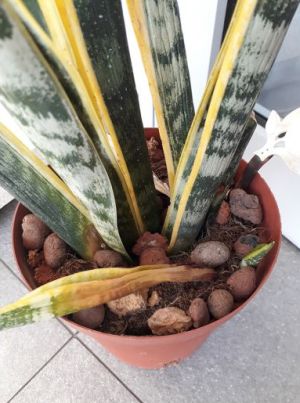
My mother-in-law’s tongue plant frequently rots at the base of a leaf and the rot then spreads upwards. This happens even though I seldom water it. What is the cause of the issue and how do I prevent it?
You may want to check the growing media. Often, these plants are produced in the nursery using a coco peat-based media, which may break down over time and become compacted. It is highly moisture-retentive and may not dry out totally if the plant is grown in a shaded area.
Together, these factors can lead to the rot of the roots and crown of your mother-in-law’s tongue plant.
You may want to take the plant out from the pot and prune the rotted portions. Remove the coco peat growing media and change it to something that is more well-draining. You can concoct such a mixture using gritty materials such as burnt earth, fine expanded clay pellets with a small amount of good quality compost or peat moss.
You should water your plant thoroughly each time and allow the soil to dry out a little before watering again. The plant should be grown in a sunny location.
You may want to move the plant into a larger pot with fresh media. You can also read our post on Best Grow Bags: Honest Reviews + Buyer’s Guide for ways to improve this situation.
Plant may be King of Bitters
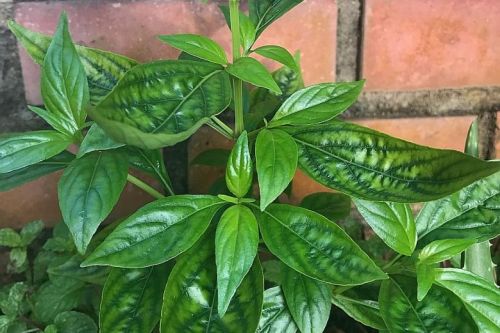
This plant is growing in my garden among the aloe vera and mint. What plant is it and should I keep or discard it?
The plant could be the King of Bitters (Andrographis paniculata).
It is often grown as a medicinal herb and has the tendency to produce seeds that grow randomly in a garden. Before you decide to use it, first let the plant flower and confirm its identity.
You may want to move the plant into a larger pot with fresh media. You can also read our post on Best Grow Bags: Honest Reviews + Buyer’s Guide for ways to improve this situation.